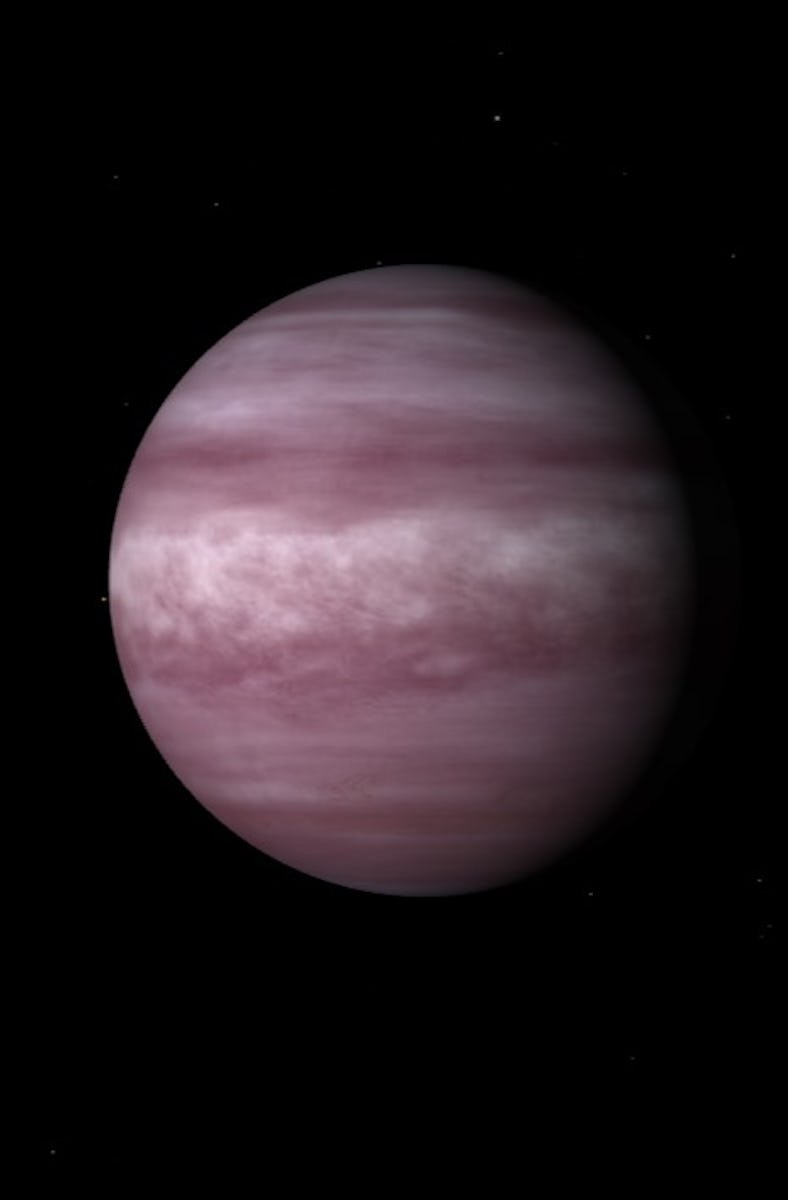A “Warm Jupiter” Exoplanet Discovery Has Astronomers Puzzled
Exoplanets are a major area of research in modern astronomy.

A discovery in the Corvus constellation invites astronomers to reimagine the star-planet recipe.
In a new study, researchers confirmed the presence of a large gaseous planet around TOI-4860, a star that is small and cool. The planet’s large size, however, runs contrary to some ideas about the relationship between stars and planets, namely that a small star wouldn’t have had an abundance of stuff swirling around it when the system formed. Their finding appeared Thursday in the journal Monthly Notices of the Royal Astronomical Society.
“I am ever thankful to the bright Ph.D. students of our team for proposing to observe systems like TOI-4860,” Amaury Triaud, lead author of the study and professor of exoplanetology at the University of Birmingham, said in a statement detailing the research. Triad goes on to say the work is “vital to deepening our understanding of planet formation.”
The SPECULOOS Southern Observatory in Chile.
A unique new world
Planets outside of the Solar System, known as exoplanets, are a major area of research in modern astronomy. So far astronomers have discovered more than 5,000 exoplanets. And each exoplanet adds something different to astronomers’ understanding of the many stellar neighborhoods within the Milky Way.
The exoplanet described in the new work is called a “warm Jupiter” because of its relative proximity, and thus warmer temperature, around the cool, dim star it orbits. It hints that there’s a range of star-planet relationships that can exist in our galaxy.
“Under the canonical planet formation model, the less mass a star has, the less massive is the disc of material around that star. Since planets are created from that disc, high-mass planets like Jupiter, were widely expected not to form,” George Dransfield, study researcher and PhD student at the University of Birmingham, explained in the statement.
This work is the first confirmation of a low-mass star hosting a high-mass planet, Dransfield goes on to share. One explanation for this discovery could be that the heavy elements the researchers detected in the gas giant’s atmosphere helped the exoplanet to beef up.
How do astronomers find exoplanets?
The newly-discovered gas giant first appeared on NASA's Transiting Exoplanet Survey Satellite (TESS), when the spacecraft detected a blink of starlight as the exoplanet crossed in front of star TOI-4860. The team behind the new research confirmed its existence with a SPECULOOS South Observatory in Chile, whose Belgian-cookie moniker stands for “Search for habitable Planets EClipsing ULtra-cOOl Stars.” The team also had help from a Japanese group using the Subaru Telescope in Hawai’i.
TOI-4860 and its warm Jupiter are good objects to study. Researchers said the exoplanet’s short trip around its parent star, which lasts just 1.5 Earth days, means it will often pass in front of its star, when valuable data can be taken. And with time, this system and others like it might offer insights into how the Milky Way grows its gas giant planets.
This article was originally published on